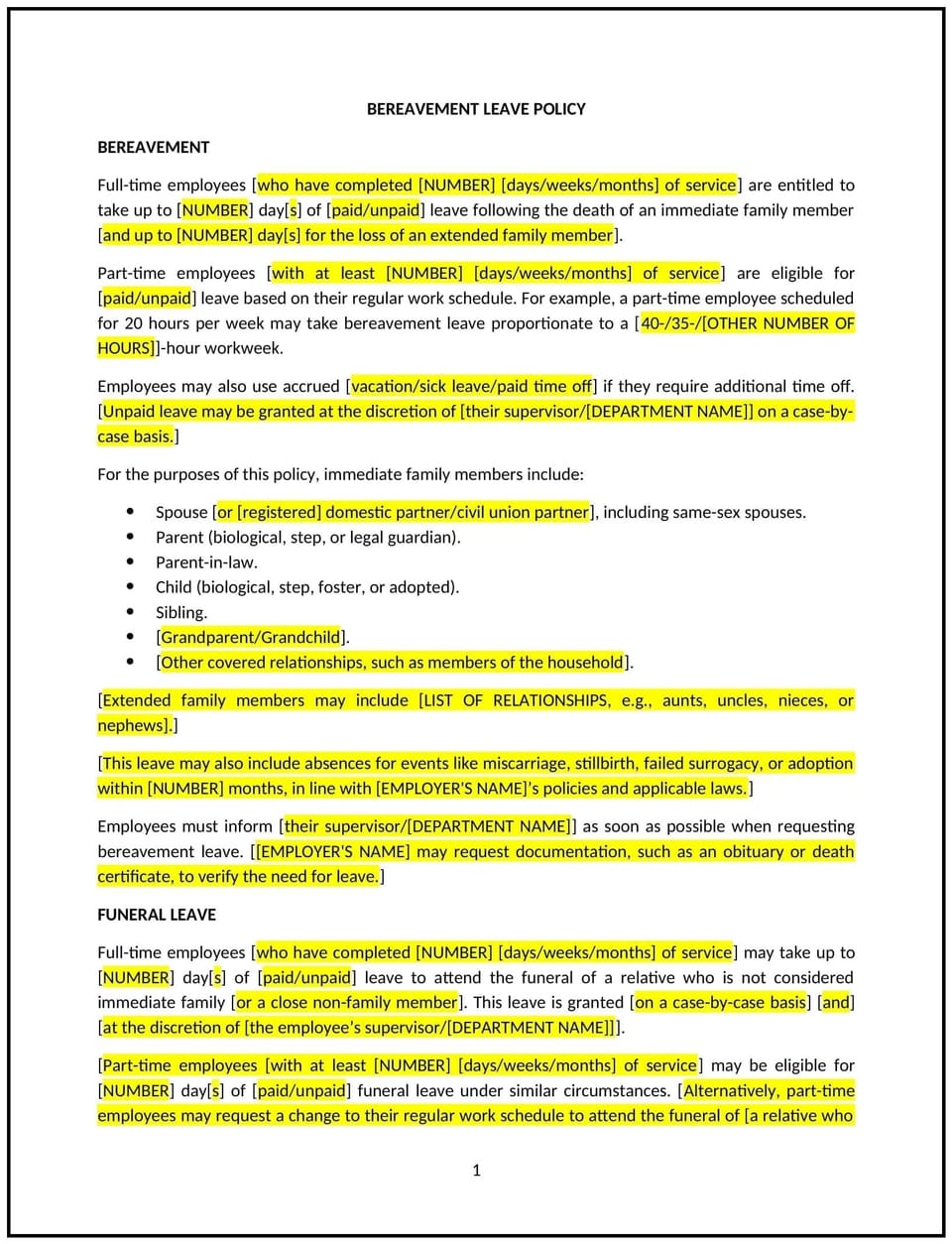Bereavement leave policy (Oregon): Free template

Bereavement leave policy (Oregon)
This bereavement leave policy is designed to help Oregon businesses establish guidelines for employees taking time off following the death of a loved one. It outlines procedures for requesting leave, duration of leave, and job protection during bereavement.
By adopting this policy, businesses can support employees during difficult times, demonstrate compassion, and maintain productivity.
How to use this bereavement leave policy (Oregon)
- Define bereavement leave: Clarify what constitutes bereavement leave and the types of relationships covered, such as immediate family members.
- Set request procedures: Outline steps for employees to request bereavement leave, including required notice and documentation.
- Address duration: Specify the number of days allowed for bereavement leave, typically ranging from 3 to 5 days.
- Ensure job protection: Guarantee that employees will return to the same or an equivalent position after bereavement leave.
- Train managers: Educate supervisors on handling bereavement leave requests and maintaining workflow during employee absences.
- Review and update: Assess the policy annually to ensure it aligns with evolving business needs and employee expectations.
Benefits of using this bereavement leave policy (Oregon)
This policy offers several advantages for Oregon businesses:
- Supports employees: Demonstrates compassion and support for employees during difficult times.
- Enhances morale: Provides employees with paid time off, boosting morale and retention.
- Aligns with best practices: Offers a structured approach to managing bereavement leave.
- Reduces stress: Allows employees time to grieve and attend to family matters, improving overall well-being.
- Builds trust: Shows employees that the business values their personal well-being and family commitments.
Tips for using this bereavement leave policy (Oregon)
- Communicate the policy: Share the policy with employees and include it in the employee handbook.
- Provide training: Educate managers on handling bereavement leave requests and maintaining workflow during employee absences.
- Monitor compliance: Regularly review bereavement leave requests to ensure adherence to the policy.
- Address issues promptly: Take corrective action if bereavement leave requests are mishandled or denied improperly.
- Update regularly: Assess the policy annually to ensure it aligns with evolving business needs and employee expectations.
Q: How does this policy benefit businesses?
A: By offering bereavement leave, businesses can support employees during difficult times, enhance morale, and reduce stress.
Q: What types of relationships are typically covered by this policy?
A: This policy typically covers immediate family members, such as spouses, children, parents, and siblings.
Q: How many days of bereavement leave are typically provided?
A: Bereavement leave typically ranges from 3 to 5 days, depending on the business’s policy.
Q: What should businesses do if an employee’s bereavement leave conflicts with business needs?
A: Businesses should work with the employee to find a mutually agreeable solution or extend the leave if possible.
Q: How often should businesses review this policy?
A: Businesses should review the policy annually or as needed to ensure it aligns with evolving business needs and employee expectations.
This article contains general legal information and does not contain legal advice. Cobrief is not a law firm or a substitute for an attorney or law firm. The law is complex and changes often. For legal advice, please ask a lawyer.


